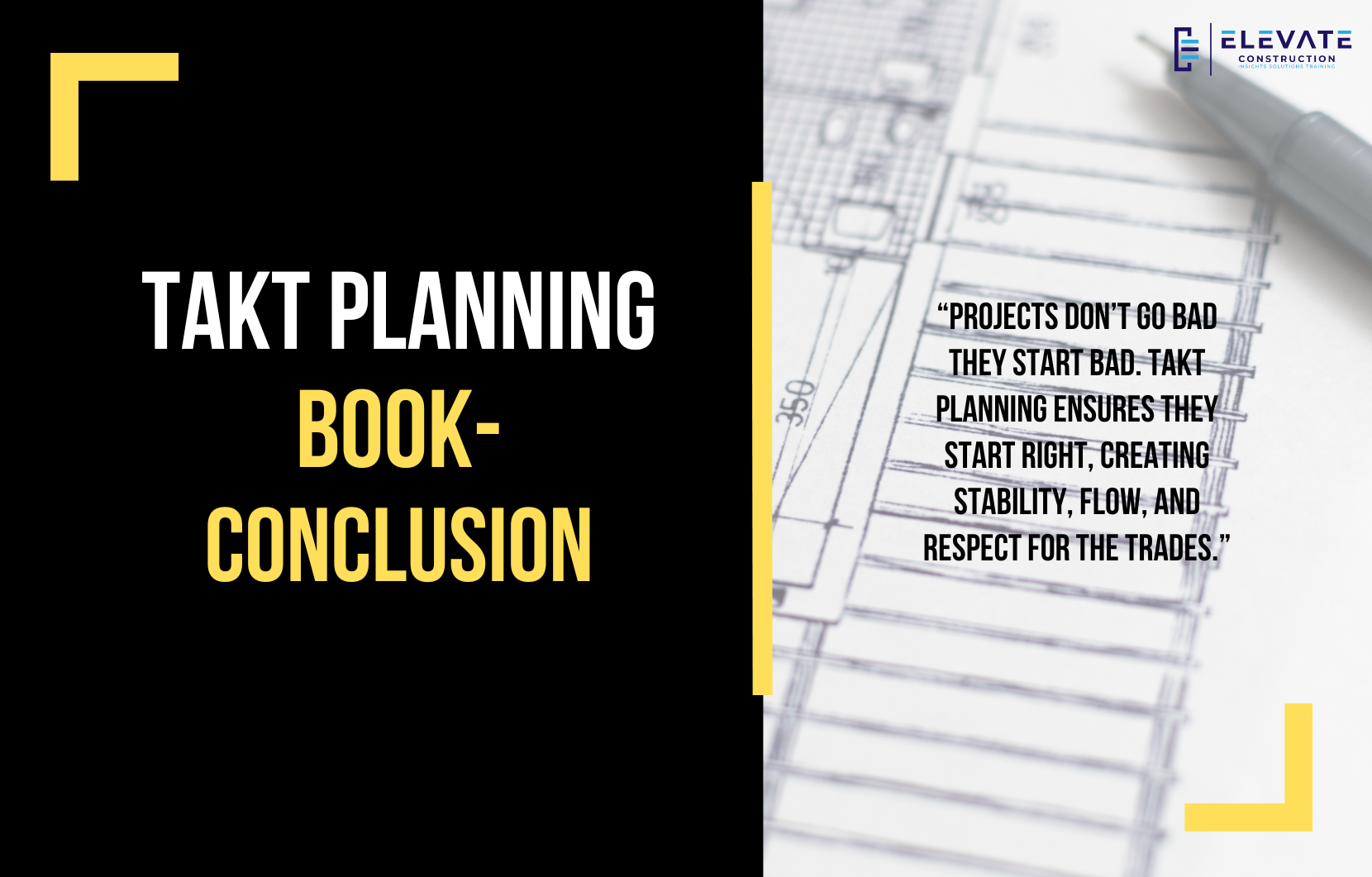Why Our Industry Must Change
TAKT planning has been around for centuries in its component parts and has consistently proven to guide projects to success. From the Empire State Building to the Pentagon renovation, history shows us that when flow is respected, projects win.
And yet, according to recent statistics, only 49.5% of projects finish on or under budget, 8.5% finish on budget and on schedule, and a shocking 0.5% finish exactly as planned. Clearly, it’s time for a change.
The truth is, projects don’t fail because of trades, owners, or external circumstances. Projects fail because of systems or the lack of them. The construction industry will never progress until we adopt proven systems that bring order to chaos, respect to the trades, and flow to the work.
That’s why the TAKT Production System (TPS) matters.
Why TAKT Works
A TAKT plan is the ideal first planner system, designed to pair with the Last Planner System (LPS). It brings flow, predictability, and stability to projects by queuing up work for last planner and scrum systems.
Here’s why it works:
- Crafted early in design when procurement, labor, and materials can align.
- Visual, location based schedules showing time and space.
- Built on rhythm and buffers that stabilize the pace of work.
- Enforces the five laws of production (Little’s Law, Law of Bottlenecks, Variation, Kingman’s Formula, Lucy’s Law).
- Creates stability, consistent crew sizes, and the ability to remove roadblocks before they cause delays.
With TAKT, teams achieve healthier project durations, clear communication, and a respectful work environment.
The 10 Commandments of TPS
- TAKT plans must be visual, clear, and easily understood.
- Schedules follow rhythm, continuity, and consistency.
- Work must be leveled and optimized with Little’s Law.
- TAKT zones must align with takt time and space.
- Flow is protected with one-process production.
- Work, crew, and trade flow must never be stacked.
- Focus on removing roadblocks and adjusting constraints.
- Quality comes first build it right, finish as you go.
- Buffers must be included to absorb risk.
- Overall durations must be reasonable and not harmful to workers.
Alongside these commandments are twelve guiding principles from beginning with zone density to making logistics part of the schedule, to ensuring buffers are visible and trade flow is always protected. These principles ensure TAKT isn’t just a schedule, but a production system.
When TAKT Fails
Like any system, TPS can fail when misapplied. Common mistakes include:
- Using rigid 5-day takt beats without flexibility.
- Forgetting buffers or creating the plan too late in pre-construction.
- Excluding trades and builders from plan development.
- Neglecting procurement alignment.
- Failing to manage steering and control in the field.
That’s why resources like taktguide.com exist to help teams avoid misalignment and stay grounded in the standards.
Moving Forward
For TAKT to succeed long term, it must be implemented with the Integrated Production Control System (IPCS):
- First Planner System
- TAKT Production System (planning, steering, control)
- Last Planner System
Together, these create a fully integrated lean approach that enables operational excellence.
The future is bright for builders willing to adopt change. With better software, simulations, trainings, and support, the tools are in place for TAKT to transform how we build.
Key Takeaway
Projects don’t go bad they start bad. TAKT planning ensures they start right, creating stability, flow, and respect for the trades. When applied with principles and integrated lean systems, it’s the most effective way to deliver projects on time, on budget, and with pride.
If you want to learn more we have:
-Takt Virtual Training: (Click here)
-Check out our Youtube channel for more info: (Click here)
-Listen to the Elevate Construction podcast: (Click here)
-Check out our training programs and certifications: (Click here)
-The Takt Book: (Click here)
Discover Jason’s Expertise:
Meet Jason Schroeder, the driving force behind Elevate Construction IST. As the company’s owner and principal consultant, he’s dedicated to taking construction to new heights. With a wealth of industry experience, he’s crafted the Field Engineer Boot Camp and Superintendent Boot Camp – intensive training programs engineered to cultivate top-tier leaders capable of steering their teams towards success. Jason’s vision? To expand his training initiatives across the nation, empowering construction firms to soar to unprecedented levels of excellence.
On we go

